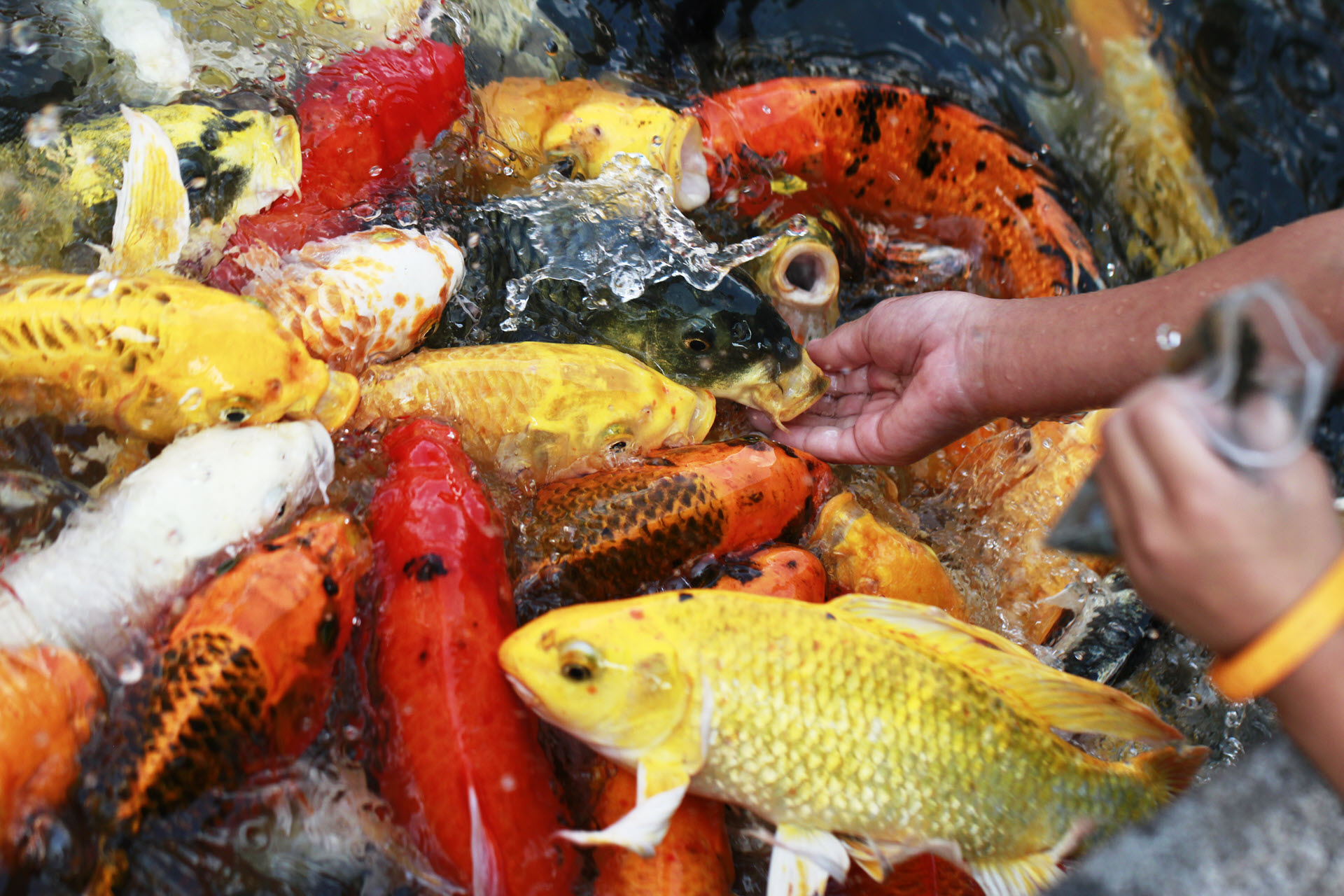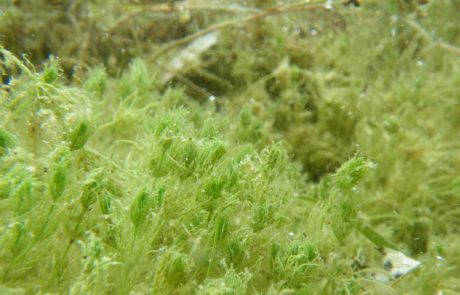As an avid koi fish enthusiast, I’m always looking to learn more about properly caring for my scaly friends One of the most important aspects of koi keeping is understanding their dietary needs Koi have complex nutritional requirements that need to be met to keep them vibrant and healthy. In this article, I’ll provide a complete guide to what koi fish can and can’t eat.
An Overview of Koi Nutrition
In the wild, koi feed on a diverse blend of plants, insects, crustaceans, and algae. Their natural diet provides them with protein, vitamins, minerals, and carbohydrates. As koi keepers, it’s our job to replicate their balanced diet as closely as possible.
The five key nutrients a koi’s diet must provide are:
-
Protein – Supports growth and body maintenance. Koi need around 25-35% protein in their diet.
-
Fats – Provides energy and aids digestion. Crucial for metabolism and organ function.
-
Carbohydrates – Gives energy for activity. Vital for growth and regulating protein utilization.
-
Vitamins & Minerals – Needed in trace amounts but supports many bodily processes
-
Fiber – Facilitates digestion and nutrient absorption. Prevents constipation issues.
With this baseline understanding of what koi need to stay healthy, let’s look at what human-provided foods can fit the bill.
What Can Koi Fish Eat? Diet Do’s and Don’ts
Koi fish can technically eat a wide variety of foods, but not all offer proper nutrition. Here are the best options to feed koi:
High-Quality Koi Pellets or Sticks
Specially formulated koi diets are nutritionally balanced to give koi exactly what they need. Look for high protein content (25-45%) and a blend of vitamins and minerals. Hikari and other top brands are great choices.
Freeze-Dried or Frozen Foods
These protein-rich options include brine shrimp, daphnia, bloodworms, and more. They make tasty treats and help vary the diet. Soak freeze-dried foods before feeding.
Vegetables
Some veggies like peas, lettuce, and zucchini can supplement a koi’s diet. Rinse well, blanch, then chop into bite-size pieces before feeding. Avoid light-colored veggies like potatoes.
Fruits
Watermelon, berries, grapes, and oranges are fruits koi enjoy. Remove rinds/pits, chop up, and feed sparingly 2-3 times a week. Citrus should be avoided as it alters water chemistry.
Live Foods
Earthworms, crickets, tadpoles or small feeder fish (like guppies) allow koi to practice their natural hunting behaviors. Use live foods as occasional treats.
Now for the don’ts – here are foods koi CAN’T safely eat:
-
Bread/crackers/chips – Low in nutrients and high in carbs. Can cause digestive issues.
-
Meat/poultry – Difficult for koi to digest and contaminates water.
-
Citrus fruits – Too acidic for koi. Disrupts optimal pond chemistry.
-
Dairy products – Koi can’t process lactose. Can cause digestive upsets.
-
Dry terrestrial foods – Koi aren’t designed to handle foods with low moisture content.
-
Raw potatoes – Contain solanine toxin which is dangerous for koi.
-
Anything spoiled or moldy – Risks illness.
As you can see, while koi can eat a variety of foods, a staple diet of high-quality pellets supplemented with vegetables, fruits and proteins is ideal for full nutrition. Now let’s look at what to feed koi at different life stages.
Best Foods for Baby Koi (Fry)
Koi fry need more protein to support their rapid growth. Here are smart options:
- Powdered or finely crushed koi pellets
- Baby brine shrimp
- Microworms
- Chopped earthworms
- Spriulina powder
- Hard boiled egg yolk
Feed newly hatched fry 5-6 small meals per day. Slowly transition to 2-3 meals for juvenile koi.
Best Foods for Adult Koi
For full-grown koi, a high-quality pellet should make up the bulk of the diet. Supplement with:
- Vegetables – peas, lettuce, zucchini
- Fruits – watermelon, grapes, berries
- Live foods – crickets, worms
- Shrimp, krill, daphnia or bloodworms
Adult koi can be fed 1-2 times per day. Offer only what they can consume within 2-3 minutes.
Foods for Enhancing Koi Color
Certain foods boost red, yellow, and orange pigments in koi:
- Shrimp, krill – Contain astaxanthin for red color
- Spirulina – Rich in carotenoids for vibrant colors
- Marigold petals – Enhance yellow/orange tones
Use color-enhancing foods sparingly as part of a balanced diet. Overfeeding can cause health problems.
Are Specialty Koi Diets Worth It?
You may come across boutique koi foods marketed for specific purposes like enhancing color, stimulating growth or boosting immunity. In my opinion, these are unnecessary if you feed a nutritionally balanced staple diet and vary treats. Some added supplements may even do more harm than good.
High-end koi diets can also be pricy. You’re better off spending that money on water quality testing supplies or new pond equipment. Stick to reputable brands that meet basic nutritional requirements at a reasonable price point.
Feed Variety is Key
Varying protein sources, fruits/veggies, and treats keeps meals exciting for koi and covers all nutritional bases. But introduce new foods gradually over 2-3 weeks and discontinue anything they don’t seem to like.
Techniques for Feeding Koi
Beyond choosing healthy foods, how you feed koi also matters. Here are some feeding tips:
-
Feed at regular times so fish associate those times with eating.
-
Only offer an amount of food koi can finish within 2-3 minutes.
-
Drop small pinches of food across the pond so all koi can access some.
-
For pellets, tap the container lightly allowing 1-2 to fall in at a time.
-
Soak dry foods like pellets briefly before feeding to prevent bloating.
-
Remove uneaten food promptly to avoid water fouling.
Troubleshooting Feeding Issues
Sometimes koi exhibit problematic feeding behaviors or appetites. Here are some common issues and remedies:
Not eating – Can signal stress, poor water quality, or disease. Test water parameters and inspect koi closely. Reduce stressors and treat any health problems.
Gulping food too quickly – Slow down greedy eaters by hand feeding pellets 1-2 at a time.
Spitting out food – Indicates dislike of a particular food. Try a different brand or prepare it differently.
Eating only certain foods – Koi may reject new foods at first. Introduce them gradually mixed with favored foods.
Lethargic at feeding time – Lack of energy likely due to illness. Consult an expert if it persists beyond a day or two.
Overeating – Feed set amounts and remove excess. Increase feeding frequency instead of quantity.
By observing koi at mealtimes, you can spot issues early and take corrective action to get fish eating well again.
Providing Proper Nutrition Takes Patience
Determining the ideal diet for koi takes some trial and error. Koi appetites and preferences differ. Be patient, offer variety, and adjust based on cues from your fish. With time, you’ll discover the best nutritional plan for vibrant, healthy koi.
To quickly recap, here are my top tips for koi fish feeding success:
- Feed a high-quality pellet as the staple diet
- Vary protein sources – live, frozen, freeze-dried
- Include vegetables and fruits in moderation
- Avoid unsafe “people foods” like bread, meat, citrus
- Introduce new foods slowly
- Use color-enhancing foods sparingly
- Feed a schedule but only enough for 2-3 minutes of eating
- Fix feeding issues promptly – consult experts if needed
Providing proper koi nutrition does require some work but it’s incredibly rewarding. There’s nothing better than watching your colorful koi swarm around excitedly at feeding time! With the right diet, you’ll be rewarded with many years of enjoyment watching your koi grow and thrive.

How To Feed Koi FishJohn reads he can feed his koi fish up to 3 times per day in a 5-minute buffet-style period.
As for technique, there are 2: throw it in the pond or hold it in his hand. If he holds it in his hand the koi should come and eat right out of it.
“I can’t wait to try the hand feeding,” John thinks as he reads.
The food in his pond, a handful of it, thrown into the water. He can picture it. He won’t be near the skimmer because it’ll suck the food in. After the first throw is gone he’ll throw in another handful, and so on. This will go on for about 5 minutes.

John doesn’t want to overfeed them though. It can lessen the water quality as the fish use the bathroom more. This can strain his filters and dirty the water as they can’t fully clean everything out.
Then the oxygen levels drop and his fish will be in danger. He doesn’t want to hurt his fish so he’s going to be careful.
Speaking of hurting them, he wonders if there’s anything he shouldn’t feed them.
What Foods Koi Fish EatJohn starts with “what to feed koi fish”.
If he doesn’t even have the right food then it doesn’t matter how he feeds his koi fish. He’ll have nothing to feed them. Hopefully, he has something around the house.
He finds out that, surprisingly, koi fish can eat almost anything organic.


Koi can eat a lot of different things in the wild and in John’s ecosystem pond. They will eat algae, aquatic plants, seeds, worms, and anything else they can find on the bottom of the pond. So, he doesn’t really even have to feed his koi fish.
Things get interesting when he finds out what else they can eat (besides koi fish food). He can feed them human food too, even the Cheerios he’s eating.
Koi fish like fruit, finely cut vegetables, shrimp, and everything. Of course, if you feed them a poor diet they will start showing it (just like us). Moderation and a good diet are key to healthy koi fish.
John has most of these foods. Now he just needs to know how to feed koi fish.
Feeding Your Koi,… Leftovers & Natural Foods,…
Can koi fish eat natural food?
Natural food sources for koi fish in the wild include insects, plants, and algae. Commercially available koi fish food is recommended, with key considerations when selecting a brand or type. Homemade food options can also be used, but there are benefits and risks to consider.
What is the best food for koi fish?
The best food for koi fish should contain all the necessary nutrition. The primary food for fish must be based on fish requirements for proteins and essential nutrients for their growth. The secondary food can be a carbohydrate that is also a need of fish.
What do Koi eat in captivity?
In captivity, koi can be fed a variety of different foods. Some common items include pellets, flake food, brine shrimp, freeze-dried food, live food, dried-food, some fruits (banana slices, orange slices), few vegetables (cucumber slices) and some human food like bread, cheese, boiled corn and cooked rice.
What food do Baby Koi fish eat?
Commercial foods are for the baby koi fish, i.e., certain baby koi meals. There is also another option of liquid food in the tubes, and you can also give them live food. These foods can be bought as eggs and then hatched at home. There is an excellent example of food, i.e., brine shrimp.
